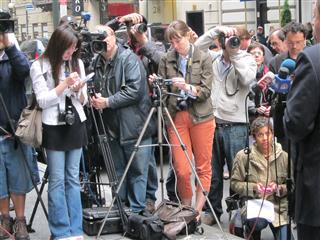


Journalism and Prediction During the Coronavirus Pandemic
From Oliver Roeder, writing for NiemanReports:
In the normal course of human affairs, journalism is the first rough draft of history.
In a pandemic, however, journalism is the first rough draft of the future.
We are all sitting alone in our homes. We are also sitting somewhere in the mathematical foothills of coronavirus’s epidemic curve, staring up, wondering where the summit lies.
As I write on March 17, there are around 4,200 confirmed cases of coronavirus in the United States (as of publication on March 18, the CDC has updated that number to 7,038, which includes both confirmed and presumptive positive cases reported to them). This seems an insignificant pittance, given that almost every major event in the country is canceled or postponed, that the stock market suffered its worst losses in decades, that President Trump is seeking $850 billion in stimulus, and that San Francisco and other communities are under stay-at-home orders.
But we understand these extreme reactions because we loosely understand how the present may become the future—how those 5,000 could become 500,000 could become 50,000,000. It is the journalist’s job to bolster this understanding.
“At the beginning of a pestilence and when it ends, there’s always a propensity for rhetoric. In the first place habits have not yet been lost; in the second, they’re returning,” Albert Camus writes in “The Plague.” “It is in the thick of the calamity that one gets hardened to truth, in other words, to silence.”
We are in the thick of the calamity. But we journalists don’t have the privilege of remaining silent. We must predict, using the best available scientific and epidemiological data.
Scientific prediction is how the population will translate the present into the future, and act accordingly. And prediction is baked into the study and understanding of infectious disease. In the normal course of human affairs, the journalist might be loath to predict, to adopt the role of diviner over that of reporter. But in a pandemic, forecasting is what’s called for. Informed divination gets at the real truth of the matter: that the present will become the future, and that the future will be very different indeed.
For the rest, click here.